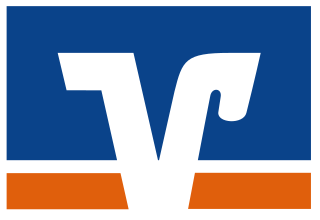
A cooperative is "an autonomous association of persons united voluntarily to meet their common economic, social and cultural needs and aspirations through a jointly owned and democratically-controlled enterprise". Cooperatives are democratically controlled by their members, with each member having one vote in electing the board of directors. Cooperatives may include:

A credit union, a type of financial institution similar to a commercial bank, is a member-owned nonprofit financial cooperative. Credit unions generally provide services to members similar to retail banks, including deposit accounts, provision of credit, and other financial services. In several African countries, credit unions are commonly referred to as SACCOs.

Microfinance is a category of financial services targeting individuals and small businesses who lack access to conventional banking and related services. Microfinance includes microcredit, the provision of small loans to poor clients; savings and checking accounts; microinsurance; and payment systems, among other services. Microfinance services are designed to reach excluded customers, usually poorer population segments, possibly socially marginalized, or geographically more isolated, and to help them become self-sufficient. ID Ghana is an example of a microfinance institution.

Friedrich Wilhelm Raiffeisen was a German mayor and cooperative pioneer. Several credit union systems and cooperative banks have been named after Raiffeisen, who pioneered rural credit unions.

Gabriel-Alphonse Desjardins, born in Lévis, Quebec, was the co-founder of the Caisses Populaires Desjardins, a forerunner of North American credit unions and community banks. For his contribution to the advancement of agriculture in the province of Quebec, he was posthumously inducted to the Agricultural Hall of Fame of Quebec in 1994.

Franz Hermann Schulze-Delitzsch, also Hermann Schulze, was a German politician and economist. He was responsible for the organizing of the world's first credit unions. He was also co-founder of the German Progress Party.

In finance, unsecured debt refers to any type of debt or general obligation that is not protected by a guarantor, or collateralized by a lien on specific assets of the borrower in the case of a bankruptcy or liquidation or failure to meet the terms for repayment. Unsecured debts are sometimes called signature debt or personal loans. These differ from secured debt such as a mortgage, which is backed by a piece of real estate.

A syndicated loan is one that is provided by a group of lenders and is structured, arranged, and administered by one or several commercial banks or investment banks known as lead arrangers.

Cooperative banking is retail and commercial banking organized on a cooperative basis. Cooperative banking institutions take deposits and lend money in most parts of the world.

Groupe Caisse d'épargne was a French cooperative banking group, with around, 4700 branches in the country. Its origins go back to the founding in 1818 of the Caisse d'Épargne et de Prévoyance de Paris, France's first savings bank. The group was active in retail and private banking, as well as holding a significant stake in the publicly traded investment bank Natixis. In 2009, it merged with Groupe Banque Populaire to form Groupe BPCE.
Village banking is a microcredit methodology whereby financial services are administered locally rather than centralized in a formal bank. Village banking has its roots in ancient cultures and was most recently adopted for use by micro-finance institutions (MFIs) as a way to control costs. Early MFI village banking methods were innovated by Grameen Bank and then later developed by groups such as FINCA International founder John Hatch. Among US-based non-profit agencies there are at least 31 microfinance institutions (MFIs) that have collectively created over 800 village banking programs in at least 90 countries. And in many of these countries there are host-country MFIs—sometimes dozens—that are village banking practitioners as well.

Moses Michael Coady was a Roman Catholic priest, adult educator and co-operative entrepreneur best known for his instrumental role in the Antigonish Movement. Credited with introducing "an entirely new organizational technique: that of action based on preliminary study" to the co-operative movement in Canada, his work sparked a wave of co-operative development across the Maritimes and credit union development across English Canada. Due to his role and influence, he is often compared to Alphonse Desjardins in Québec. The influence of the movement he led spread across Canada in the 1930s and by the 1940s and 1950s, to the Caribbean, Africa and Asia.
Credit unions are not-for-profit financial cooperatives. In the early stages of development of a nation's financial system, unserved and underserved populations must rely on risky and expensive informal financial services from sources like money lenders, ROSCAs and saving at home. Credit unions proved they could meet demand for financial services that banks could not: from professional, middle class and poorer people. Those that served poorer urban and rural communities became an important source of microfinance.

Solidarity lending is a lending practice where small groups borrow collectively and group members encourage one another to repay. It is an important building block of microfinance.

The German Cooperative Financial Group, German: Genossenschaftliche FinanzGruppe Volksbanken Raiffeisenbanken, sometimes referred to in English as "Volksbanken Raiffeisenbanken Cooperative Financial Network", is a major cooperative banking network in Germany that includes local banks named Volksbanken and Raiffeisenbanken, the latter in tribute to 19th-century cooperative movement pioneer Friedrich Wilhelm Raiffeisen. The Cooperative Group represents one of the three "pillars" of Germany's banking sector, the other two being, respectively, the Sparkassen-Finanzgruppe of public banks, and the commercial banking sector represented by the Association of German Banks.

Crédit Mutuel is a French cooperative banking group, one of the country's top five banks with over 30 million customers. It traces its origins back to the German cooperative movement inspired by Friedrich Wilhelm Raiffeisen in Alsace–Lorraine under German rule, in the 1880s. Crédit Mutuel was a member of the International Raiffeisen Union (IRU).

Canada has significant per-capita membership in credit unions, representing more than a third of the working-age population. Credit union membership is largest in Quebec, where they are known as caisses populaires, and in western Canada.

Raiffeisen Switzerland is a cooperative of cooperatives – the union of all independent Swiss Raiffeisen banks. It bears responsibility for the business policy and strategy within the Raiffeisen Group. The 246 independent Raiffeisen banks of Switzerland are organised as cooperatives. With 896 branch offices in total, they make up the densest branch network of any Swiss bank. In the 21st century, the Raiffeisen Group has become the third-largest banking group in Switzerland with total assets currently at CHF 229 billion. Since June 2014, Raiffeisen has been classified as one of Switzerland's systemically important banks and must therefore meet special requirements in terms of capital. Raiffeisen Switzerland has 3.8 million clients in Switzerland, of whom 1.9 million are cooperative members and thus co-owners of their regional Raiffeisen banks.
















